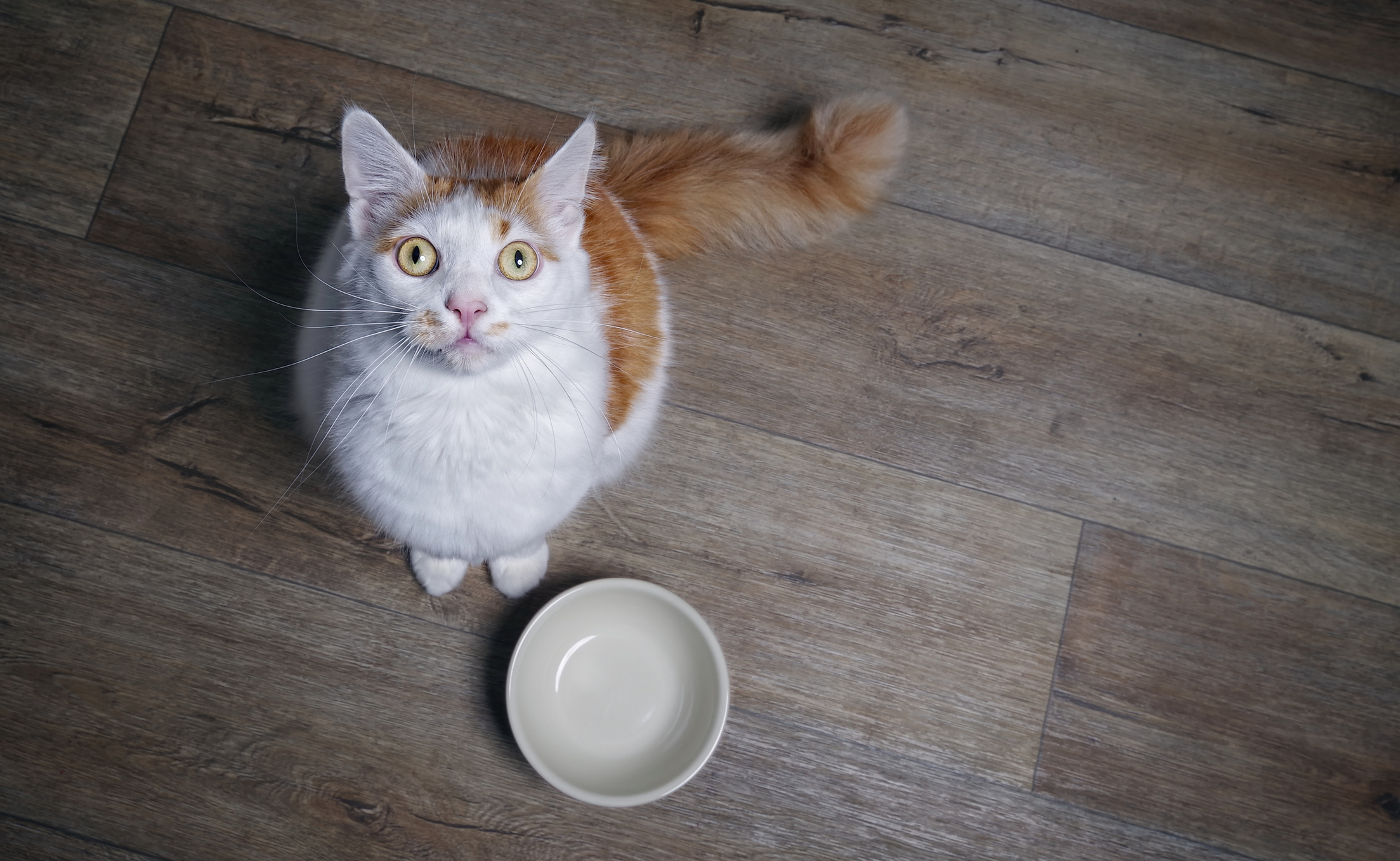
Are Food Allergies Behind Your Cat's Stinky Gas?
It may stink, but it’s true: Everyone farts, even our cats. While dogs are better known for loud and smelly flatulence, your cat might actually be the culprit behind that suspicious odor that permeates a room, and that’s totally normal! Unfortunately, if your cat seems to be passing gas frequently, they might be experiencing a problem you’ll want to fix.
Lots of things can cause stinky gas in cats. Flatulence is merely a buildup of gas in the intestines, so if your cat swallows a lot of air when they eat quickly, they might toot a little later on. However, more significant problems like food allergies can cause irritation in your cat’s colon, leading to more frequent—and often malodorous—gas.
Although flatulence isn’t a severe problem for cats, if it is being caused by food allergies, it’s important to address it as soon as possible to ensure your kitty’s comfort and health.
Identifying food allergies in cats

Cats can be allergic to a lot of things, including flea bites, dust, mold and pollen. However, these allergens are more likely to cause itchiness and irritation of the skin and respiratory issues. When it comes to irritation of the bowels, food is more commonly to blame.
Different foods can cause episodes of flatulence in cats. For example, some cats experience lots of gas if their diet is too rich in fiber. Table scraps are also known to irritate cat’s digestive systems and cause gas. But if your cat has been eating the same food as they always have, and the flatulence problem is new, it’s possible they have developed an allergy to an ingredient in their meals.
Common signs of food allergies include:
- Flatulence
- Vomiting
- Diarrhea
- Itchiness
- Inflammation
If your cat has food allergies, they might also experience malabsorption—a condition in which their body is unable to absorb nutrients. This can cause numerous other symptoms, including weight loss, lethargy, a dull coat and an increased appetite.
How food allergies can cause gas
The food your cat eats is broken down in the small intestines, where the majority of the nutrients are absorbed. However, some foods are not able to be digested easily, and they move to the large intestine where bacteria work to break them down. These bacteria produce gaseous byproducts during a fermentation process, which build up in the colon and need to be released. This tends to be where the malodorous gas comes from.
If your cat is allergic to a particular ingredient, it means their body mistakenly identifies the food as a harmful invader. The immune system will react to the ingredient’s presence by releasing antibodies, which trigger the release of histamine. Histamine is what causes inflammation and the range of uncomfortable symptoms allergies produce.
When this inflammation occurs in the colon, the intestines are unable to digest food and absorb nutrients properly. This can lead to intestinal irritation, along with gas, diarrhea and vomiting.
Food allergies are similar to food intolerances, but these conditions are not the same. While food allergies involve a reaction from the immune system, food intolerances only involve the function of the digestive system. Typically, an intolerance means that the body lacks the proper bacteria or enzymes to effectively break down certain foods. This inability can lead to similar symptoms, such as bloating, gas and diarrhea.
When it comes to diagnosing food allergies or intolerances in cats, vets often have trouble distinguishing between the two because of their similar symptoms. You might be able to tell the difference if your cat develops itchiness alongside their gastrointestinal symptoms. No matter which problem your cat has, however, you’ll want to take action to make them more comfortable.
Getting to the bottom of your cat’s allergies

Beef, chicken and corn are some of the most common allergens cats react to in food. Typically, cats will develop allergies to ingredients after being exposed to them for a long time, so the most common cat food ingredients are often the most common culprits.
Food allergies are not able to be diagnosed through blood or skin tests like other types of allergies might. The most reliable way to determine whether your cat is allergic to an ingredient in their food is to conduct food trials using a different food with a novel protein and carbohydrate. After a few weeks on this new food, you should be able to determine whether your cat is still experiencing allergy symptoms. Once your pet’s symptoms have cleared, you may need to conduct food trials to determine the specific ingredient that’s causing problems for your pet.
Once the source of the allergies is discovered, treatment is easy. Simply feed your cat a new food that doesn’t contain their allergens, and their digestive health should return to normal—and so should their gas!


